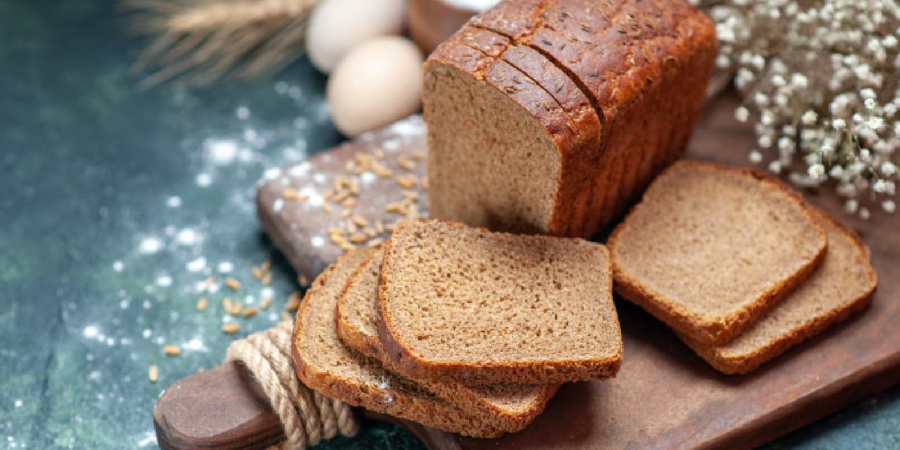Brown bread has long been touted as a healthier alternative to white bread. But is brown bread really healthy? In this article, we’ll explore the nutritional benefits, potential downsides, and everything you need to know about brown bread.
What is Brown Bread?
Brown bread is made from whole grain flour, which includes the bran, germ, and endosperm of the grain. This is in contrast to white bread, which is made from refined flour that has been stripped of its nutrients.
Types of Brown Bread
- Whole Wheat Bread: Made from whole wheat flour.
- Rye Bread: Made from rye flour and often denser.
- Multigrain Bread: Contains multiple types of grains and seeds.
- Oat Bread: Made with oat flour, often gluten-free.
Nutritional Benefits of Brown Bread
1. Higher Fiber Content
Brown bread typically contains more fiber than white bread. Fiber is essential for digestive health and can help in weight management.
| Type of Bread | Fiber Content (per 100g) |
|---|---|
| Whole Wheat Bread | 6.5g |
| White Bread | 2.7g |
| Rye Bread | 5.8g |
| Multigrain Bread | 7.0g |
2. Rich in Nutrients
Brown bread is packed with vitamins and minerals, including:
- B Vitamins: Important for energy metabolism.
- Iron: Essential for oxygen transport in the blood.
- Magnesium: Supports muscle and nerve function.
3. Lower Glycemic Index
Brown bread generally has a lower glycemic index (GI) than white bread. This means it causes a slower rise in blood sugar levels, making it a better option for those managing diabetes.
Potential Downsides of Brown Bread
While brown bread has many benefits, it’s essential to consider some potential downsides.
1. Processing and Additives: Not all brown bread is created equal. Some brands may add sugars, preservatives, or artificial ingredients. Always check the label to ensure you’re getting a healthy product.
2. Gluten Sensitivity: For individuals with gluten intolerance or celiac disease, even whole grain breads can be problematic. In such cases, gluten-free options like oat or rice bread might be more suitable.
Real-Life Examples
Case Study: Sarah’s Switch to Brown Bread
Sarah, a 30-year-old fitness enthusiast, decided to switch from white to brown bread. Initially, she noticed a significant increase in her energy levels and improved digestion. After a few months, she reported feeling fuller for longer, which helped her maintain a healthy weight.
Case Study: John’s Struggle with Gluten
John, a 45-year-old diagnosed with celiac disease, was excited to try brown bread. However, he quickly learned that many brown breads contain gluten. After switching to gluten-free alternatives, he experienced a marked improvement in his health.
How to Choose Healthy Brown Bread
- Read the Ingredients: Look for whole grain or whole wheat as the first ingredient. Avoid breads that list refined flour or sugar as primary ingredients.
- 2. Check the Fiber Content: Aim for a bread that contains at least 3 grams of fiber per slice.
- 3. Watch for Additives: Choose breads with minimal ingredients. The fewer the ingredients, the better.
- 4. Look for Certifications: Opt for breads that are labeled as “100% whole grain” or “whole wheat.”
- Conclusion
In summary, brown bread can be a healthy choice when made from whole grains and consumed in moderation. Its higher fiber content, rich nutrient profile, and lower glycemic index make it a superior option compared to white bread. However, always be cautious of additives and gluten if you have dietary restrictions.
Final Thoughts
Brown bread can be a delicious and nutritious part of a balanced diet. By making informed choices, you can enjoy the benefits of brown bread while avoiding potential pitfalls. Whether you’re looking to improve your health or simply enjoy a tasty sandwich, brown bread might just be the perfect fit.
Key Takeaways
- Higher Fiber: Brown bread is richer in fiber than white bread.
- Nutrient-Dense: It provides essential vitamins and minerals.
- Lower GI: It helps maintain stable blood sugar levels.
- Ingredient Awareness: Always read labels to avoid unhealthy additives.
By understanding the nuances of brown bread, you can make choices that align with your health goals. Happy eating!


